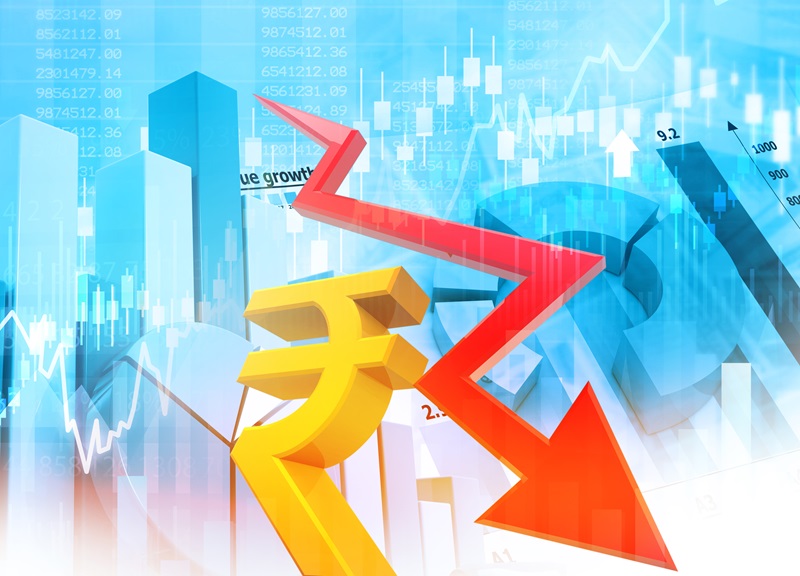.png)

Babuji K is a career central banker with 35 years at RBI in exchange rate management, reserve operations, supervision, and training.
August 5, 2025 at 7:17 AM IST
India’s currency and external buffers are set for another test as US President Donald Trump’s plan for sweeping tariffs on Indian exports collides with fragile trade and capital flows. The market participants may probability bracing for higher volatility in the dollar rupee rate, underscoring the fine balance it must strike between protecting macroeconomic stability, monetary policy, exchange rate policy and preserving policy space for growth.
The proposed 25% levy on goods such as textiles, jewellery and pharmaceuticals threatens to widen India’s already negative trade and current account balances. These gaps have historically placed downward pressure on the rupee, which ended March 2025 at 85.45 to the dollar after years of steady depreciation from 75.70 in 2020. While the tariffs themselves may shave only 0.1–0.6% of gross domestic product, their knock-on effects through capital flows and commodity prices could be more destabilising.
Currency buffer
India’s vulnerability stems from the way external shocks filter through multiple channels: trade, commodity prices, financial flows and investor sentiment. The tariff move comes as geopolitical tensions complicate energy sourcing, with Washington signalling possible penalties on Russian crude imports besides non-tariff ones. Oil remains India’s single biggest import, so any price spike would feed straight into the current account deficit and inflation, forcing the central bank to weigh rupee defence against its inflation target.
The Reserve Bank of India operates a managed float regime, stepping into spot and forward markets to smooth sharp moves without targeting a specific level. Its record foreign exchange reserves, now near $660 billion, give it room to sell dollars and absorb excess rupee liquidity or to buy dollars when capital inflows threaten volatility. These interventions directly affect domestic money markets, binding currency management to broader monetary policy.
Past data show how reserves have acted as a shock absorber. The current account swung from a rare surplus in 2021 back to a deficit of 0.6% of GDP in 2025, yet the rupee’s slide has been orderly compared with peers. The real effective exchange rate index suggests the currency remains valued (as per REER number of 100.36 in the table of recent RBI monthly bulletin) lending credibility to the RBI’s approach.
The challenge now is whether to allow gradual depreciation to support export competitiveness or to defend the currency more aggressively to contain imported inflation as the cost of imported products rise. A sliding rupee could aid exporters hit by tariffs, but it risks spooking foreign investors already wary of emerging-market volatility.
Policy choices extend beyond direct intervention. The central bank may have the option to neutralise rupee liquidity released by maturing forward contracts or by adjusting open market operations. It can also encourage corporates and non-residents to hedge their currency exposure, reducing reliance on official support. Coordinated strategies such as building strategic oil reserves and using oil futures markets for price hedging could further cushion external shocks.
Much will hinge on global conditions. Any shift in US Federal Reserve policy, particularly rate cuts aimed at cushioning America’s own economy, could redirect capital flows and ease pressure on emerging markets. Conversely, a prolonged tariff standoff and firmer oil prices would strain India’s buffers, even with its relatively healthy reserve cover.
The RBI’s credibility rests on its track record of managing more acute crises, from the taper tantrum of 2013 to pandemic-era volatility. Yet the policy trade-offs today are more intricate. Growth is slowing, inflation remains sticky, and fiscal policy offers limited room to offset shocks. Maintaining stability will require nimble interventions and constant calibration between defending the rupee and preserving monetary flexibility.
India’s external sector is better prepared than in previous episodes, but the margin for error is more challenging. As tariffs bite and capital flows turn fickle, the Reserve Bank’s decisions in the months ahead will be central to anchoring confidence in both the currency and the broader economy.




